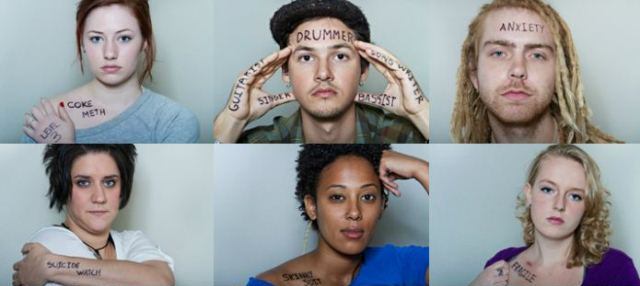Camico McKnight was insecure about her health. But instead of hiding it, she decided to make her insecurity public by including herself in one of the photos for the “What I Be Project”, which will be displayed in the Library building at the beginning of March.
The photo shows the 37-year-old liberal studies major with the words “sickle cell” and “cancer” written on her arms. The caption reads, “I am not my diagnosis.”
“It’s not what I am because I’m so much more than this,” McKnight said.
McKnight was just one of 28 students and faculty at Cosumnes River College who participated in the “What I Be Project,” which was created by photographer Steve Rosenfield as a way to help people deal with their insecurities.
CRC anthropology professor Anastasia Panagakos said she wanted to bring the “What I Be Project” to campus to promote Safe Spaces, a CRC program she coordinates that helps students—regardless of their race, sexual orientation, religion or politics—when they feel threatened or discriminated against.
“If people can see people that they recognize in this exhibit and say, ‘wow, I had no idea that person was insecure about that thing,’ hopefully it will generate empathy, and I’m hoping it will generate discussion about what it means to be an inclusive campus and how we all should realize that we’re human,” Panagakos said.
Rosenfield talked about the project to an audience of approximately 100 people at the Recital Hall on Feb. 24.
He said that 10 years ago, he was an “opinionated jerk” and “materialistic,” and as a result, his relationships with those around him suffered. He wasn’t happy and realized that he needed to change.
“I decided to open up and show who I really was, rather than hide it and pretend like I was this perfect person and that nothing was ever wrong,” Rosenfield said.
Rosenfield said that his relationships improved and that he felt much happier.
For Rosenfield, the “What I Be Project” was a test on something that worked in his life, a test he decided to do through his passion: photography.
“Through sharing what is going on with you, I think it opens up so many doors for other people to accept what is going on because they feel connected because they might have the same issue,” Rosenfield said.
Rosenfield said he has photographed around 500 people for this project, which started in 2010.
Rosenfield introduced the audience to his friend, Amanda Stang, who joined the lecture through Skype. Stang, who was the first person to be photographed in Rosenfield’s project, read her essay about the insecurity of her body.
Rosenfield showed some of the pictures from his project and said that confessing your insecurity forces you to take responsibility.
“I think you become accountable when you tell someone because then they hold you accountable,” Rosenfield said. “If we share our insecurities, we’re going to be held accountable for them, rather than shying away from them, which I think is what stunts our growth in ourselves.”
He then did an exercise with the audience in which he asked someone to stand up and tell the rest of the audience about his or her insecurity.
One volunteer stood up and admitted he was insecure about his acne. Others followed and talked about their insecurities, which included age, body, intelligence, ethnicity, pills and employment.
McKnight, who also attended the event, said that people don’t have to let their insecurities hold them back from living their lives.
“I’m living for today, and I’m going to let tomorrow take care of itself,” she said. “But in letting tomorrow take care of itself, I’m not going to focus on my diagnosis.”

